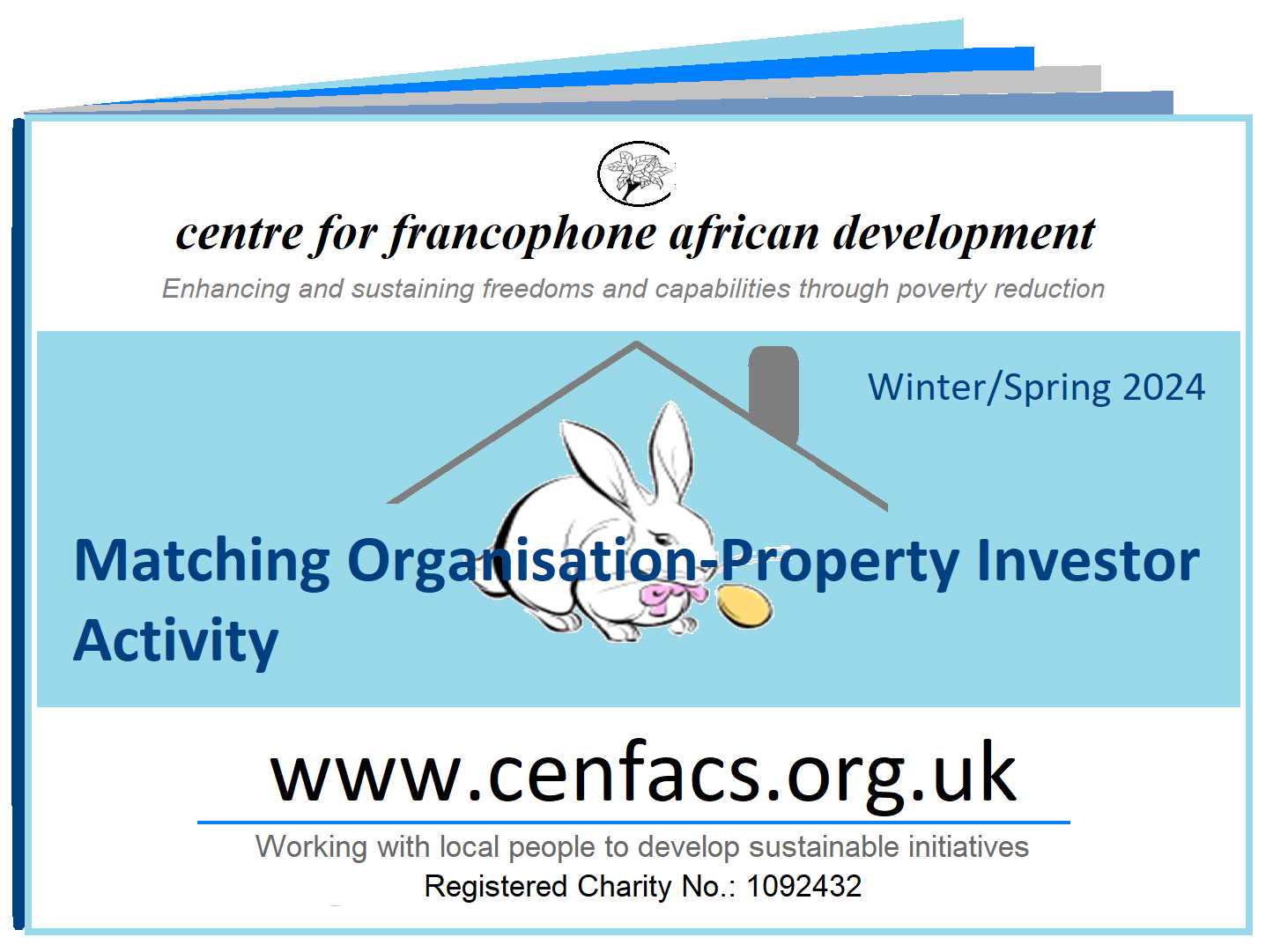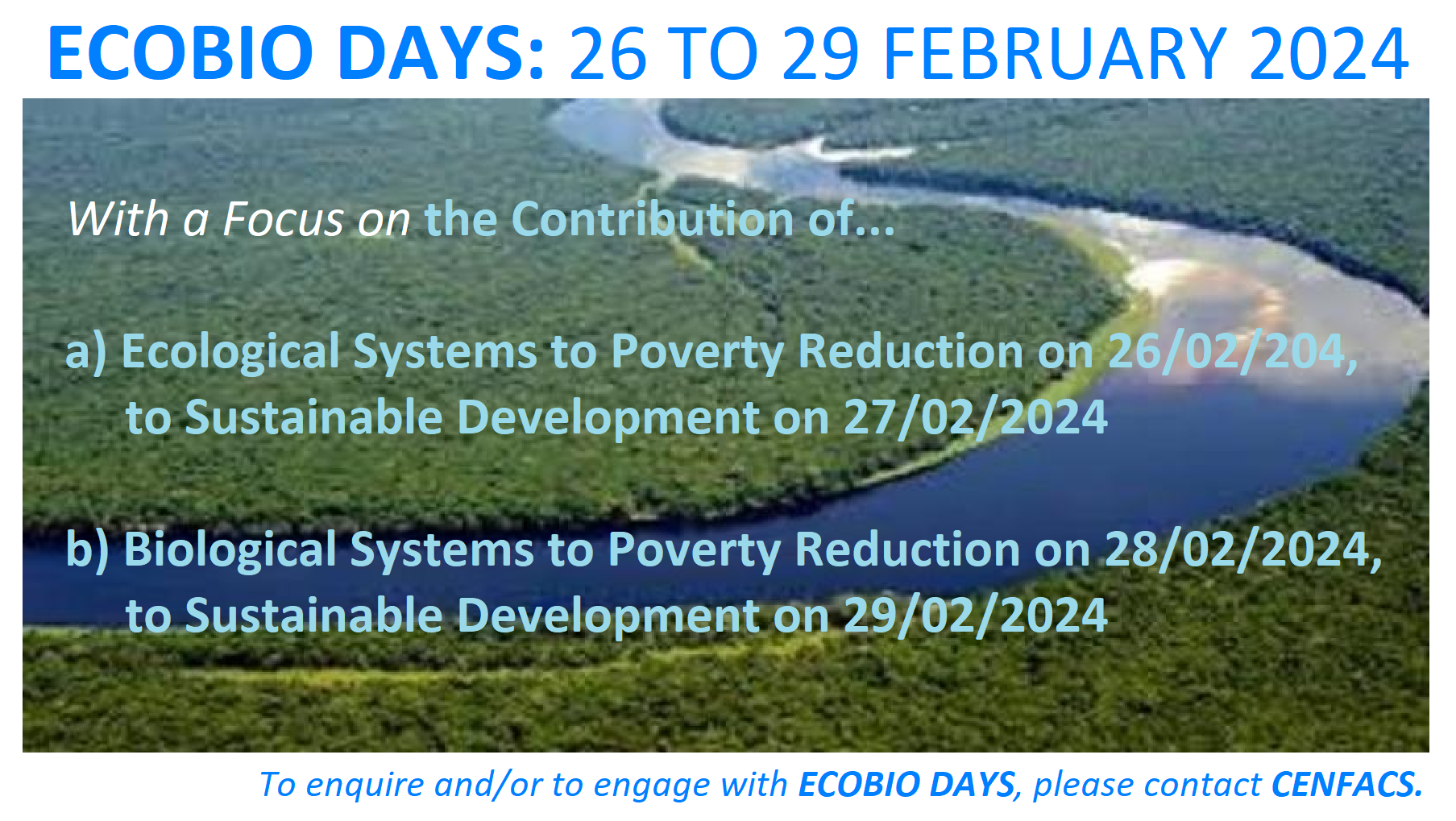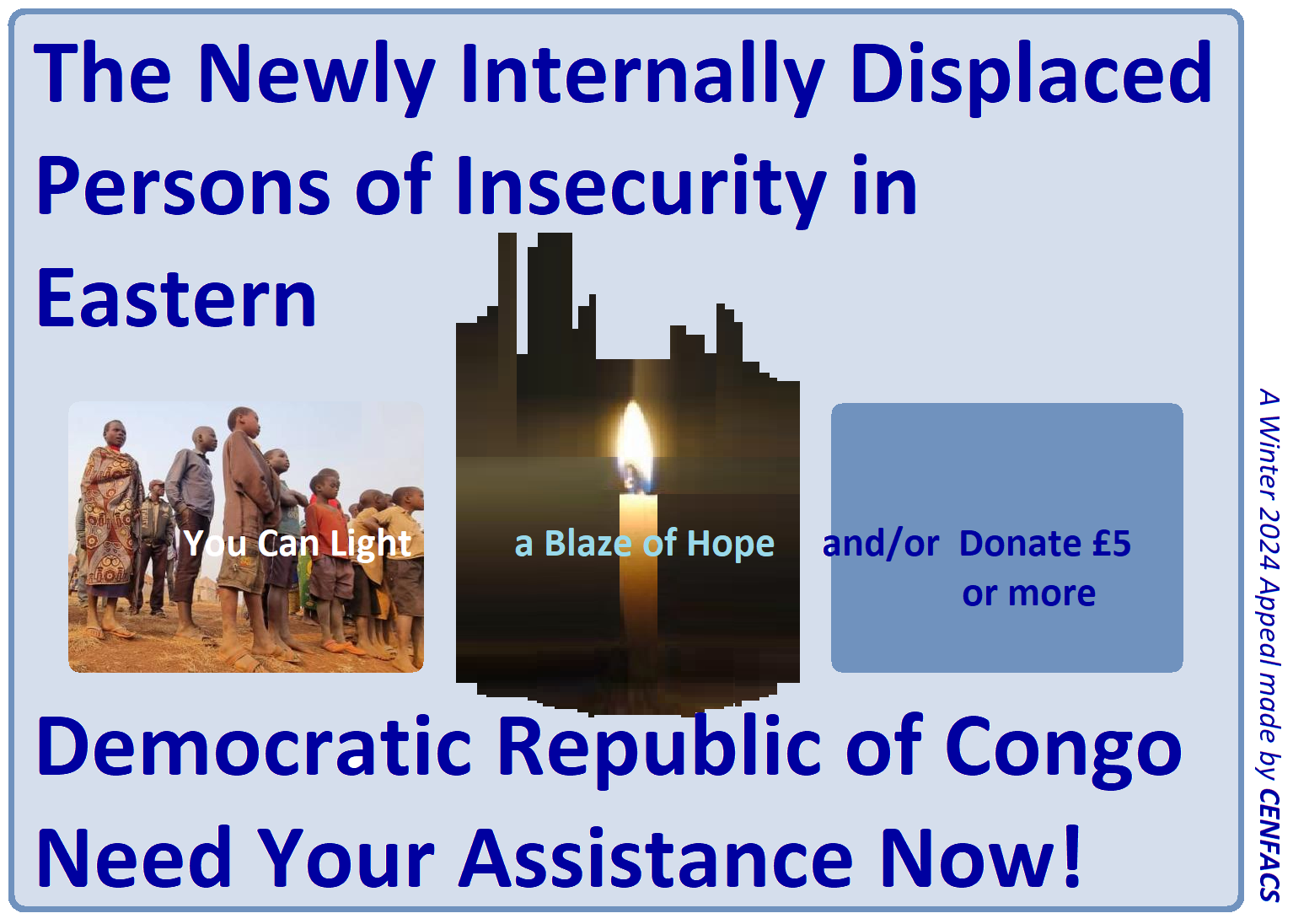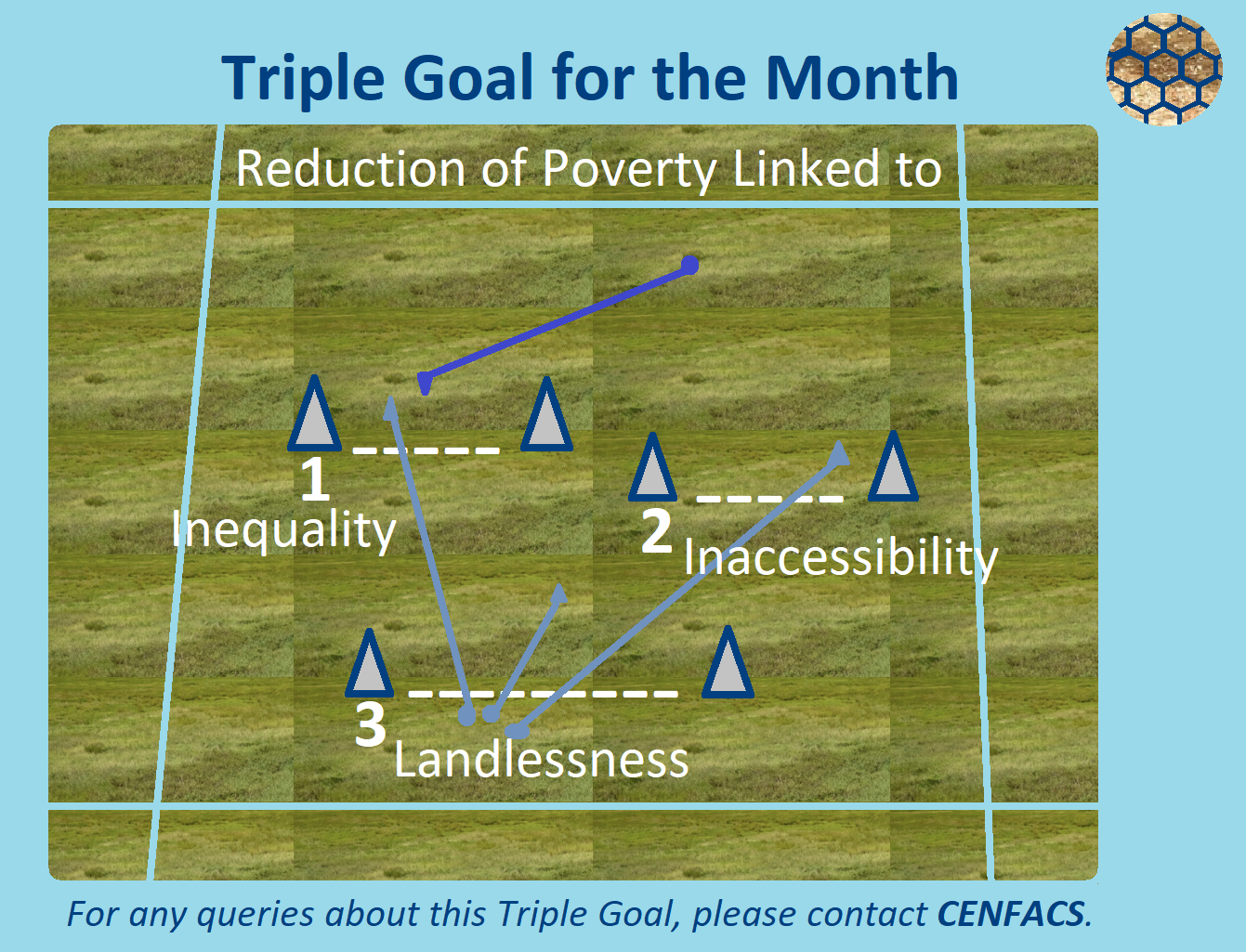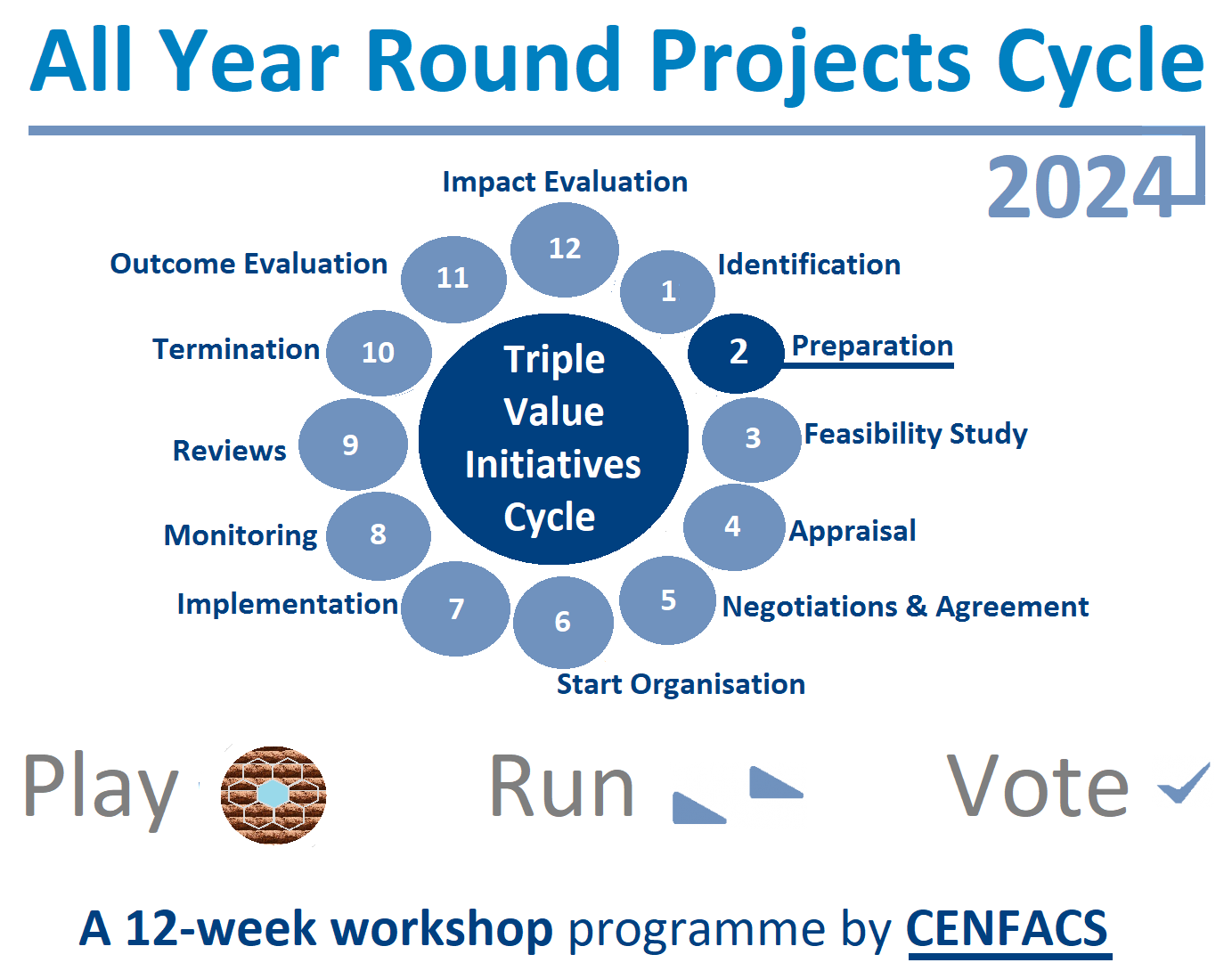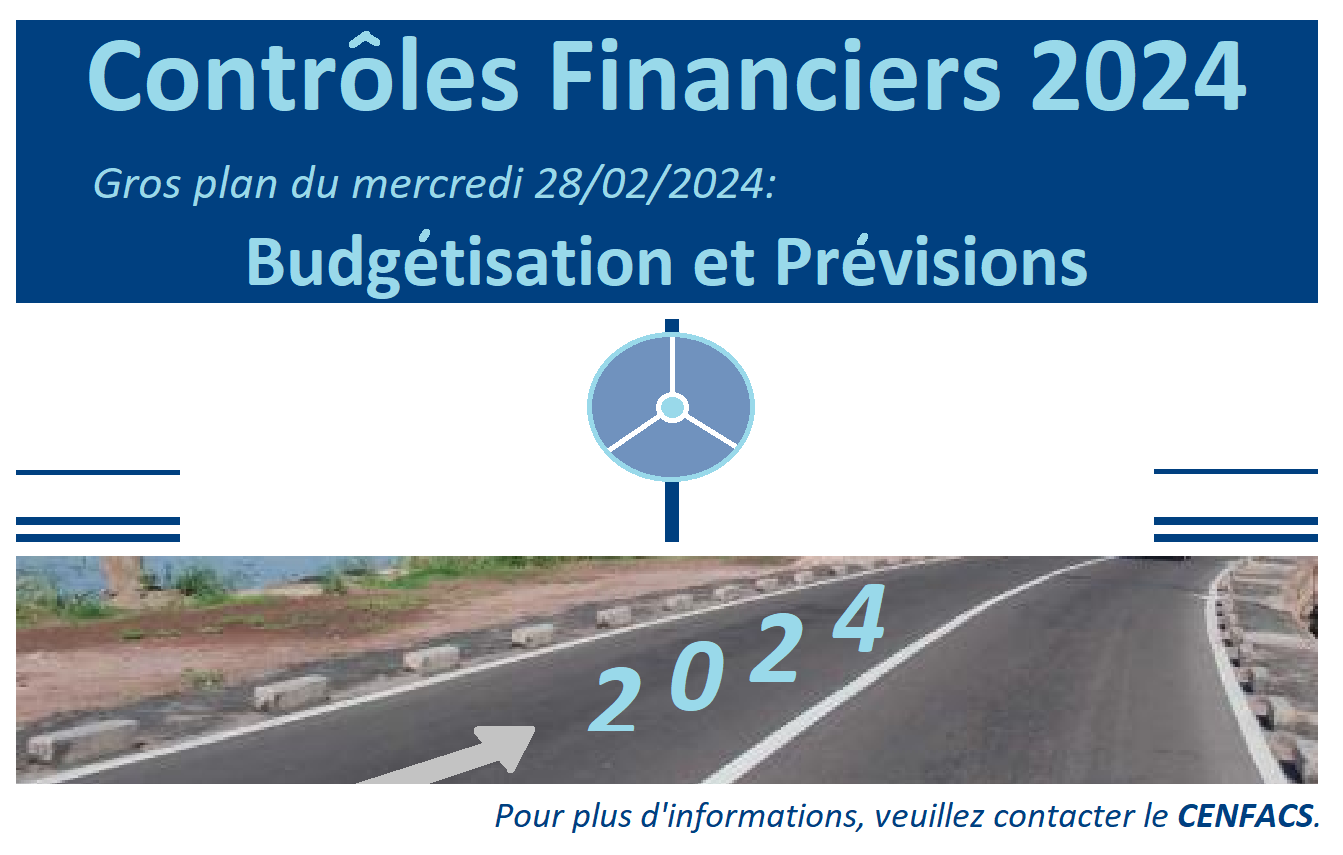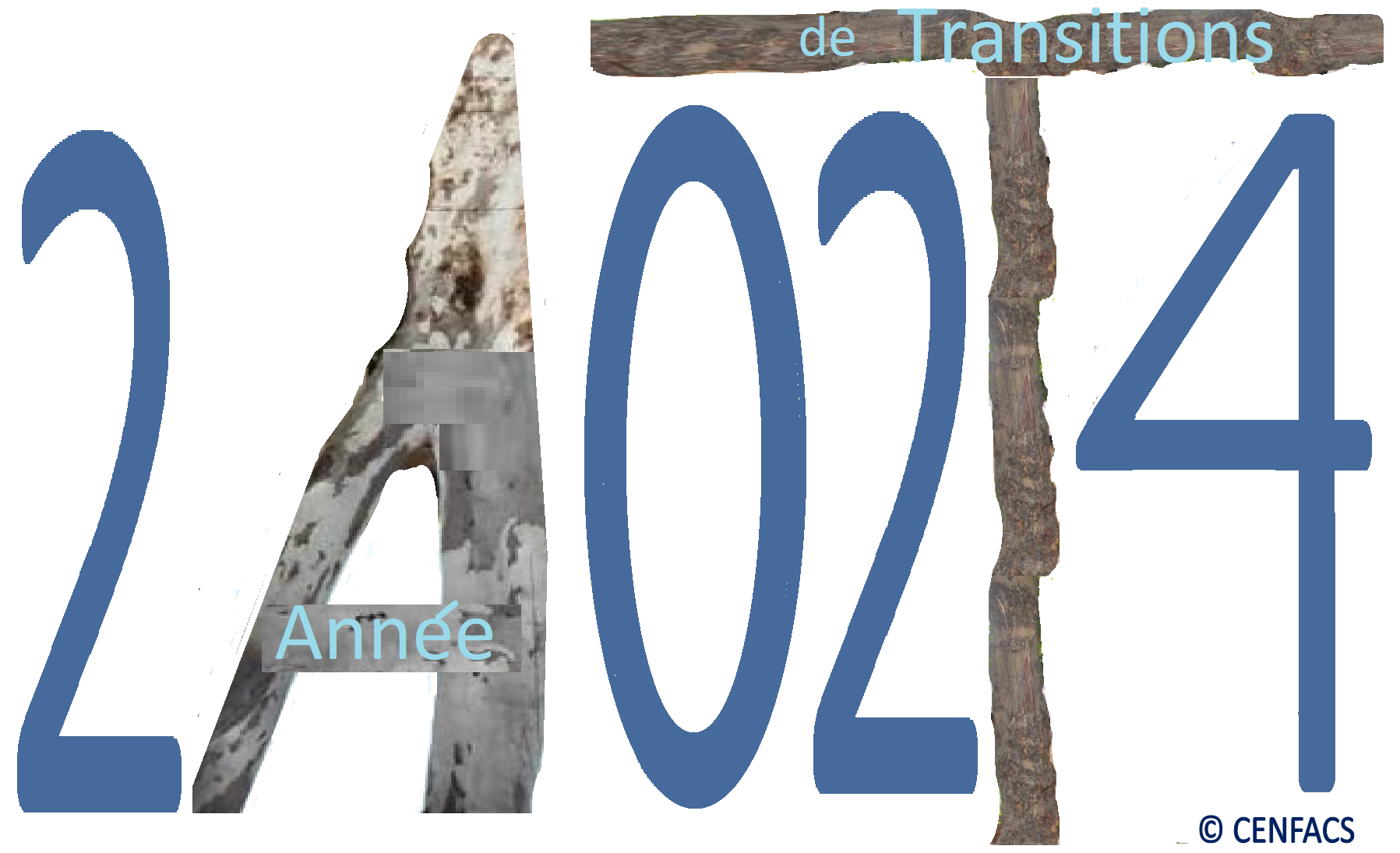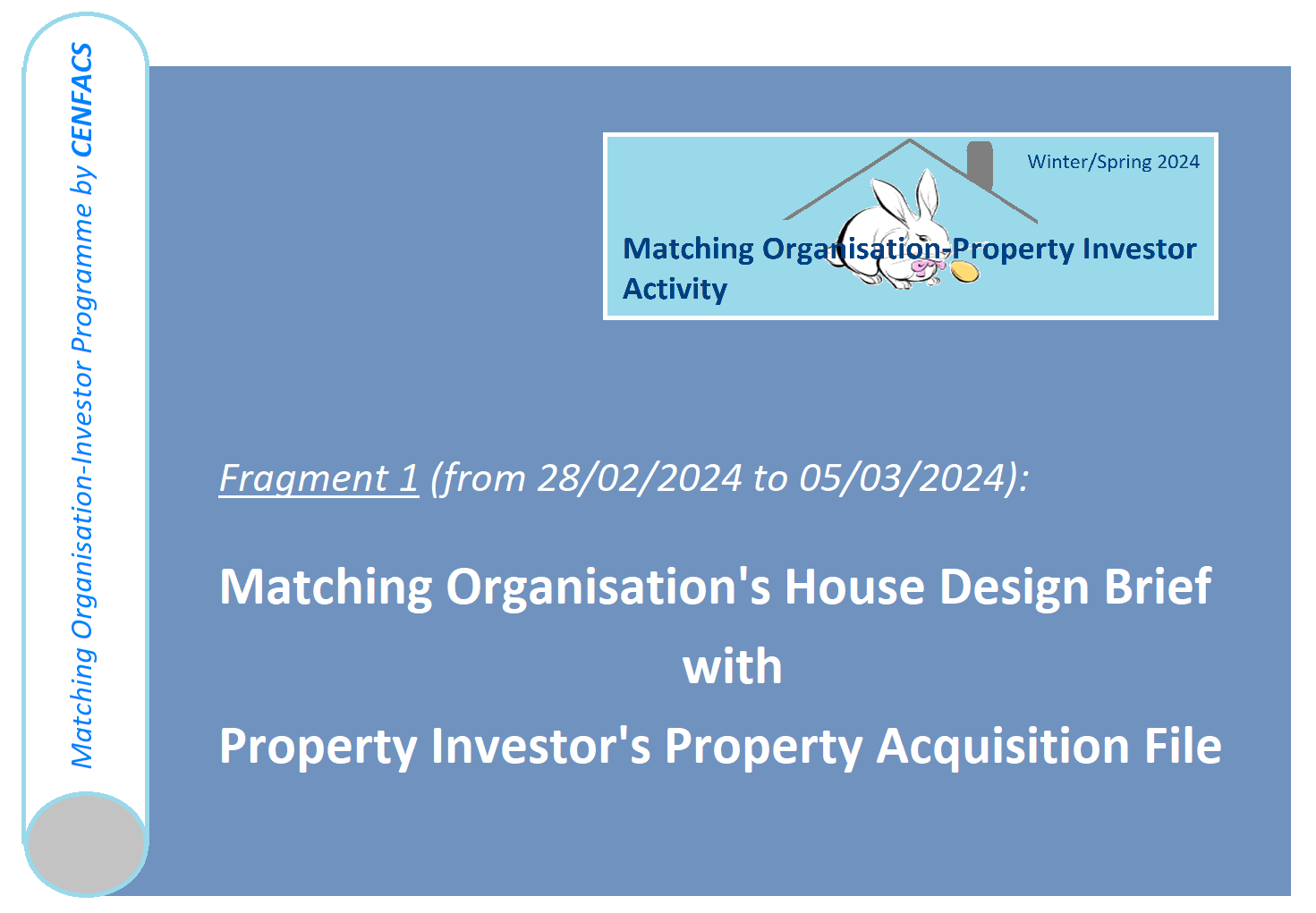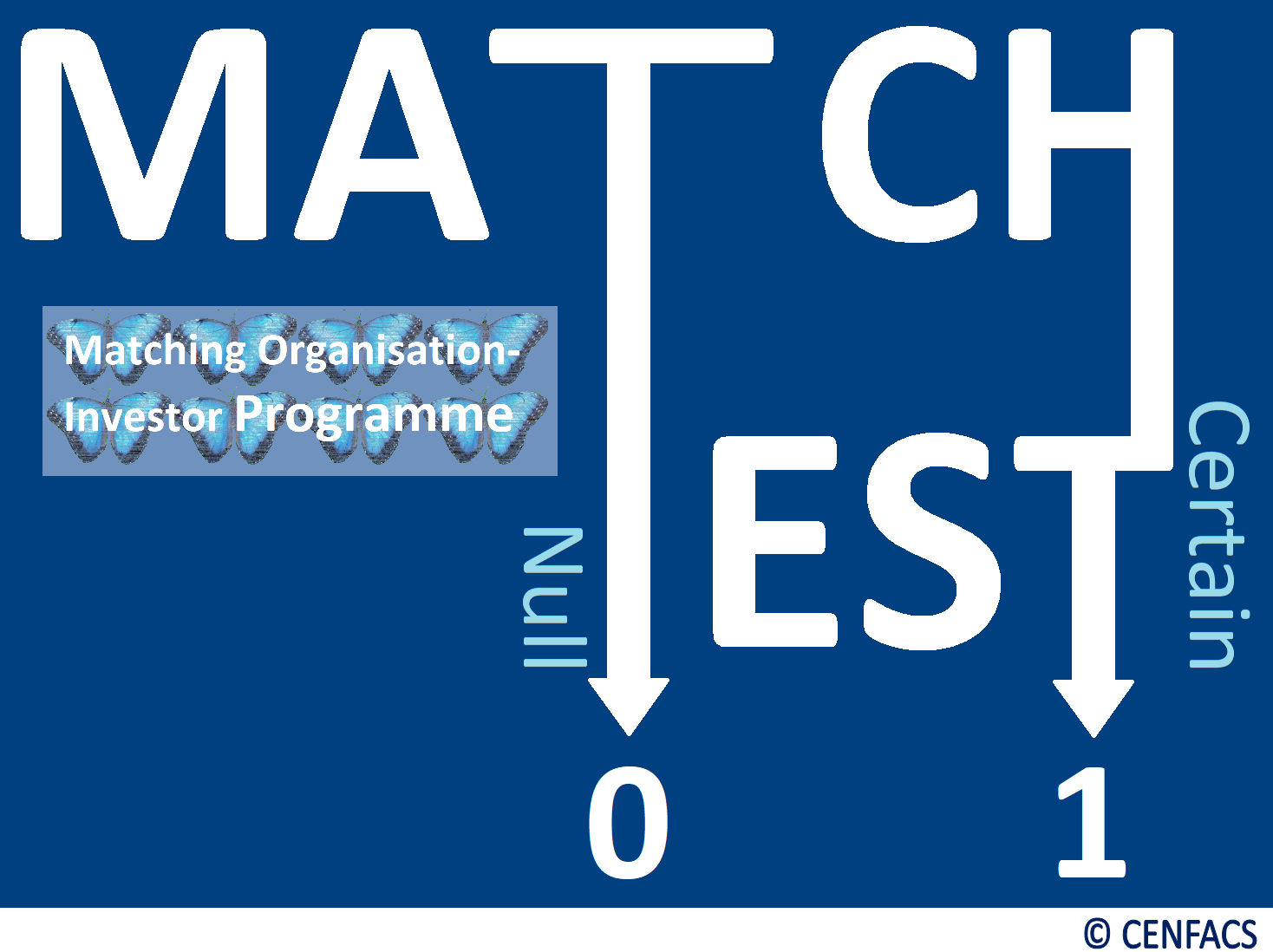Welcome to CENFACS’ Online Diary!
28 February 2024
Post No. 341
The Week’s Contents
• Matching Organisation-Property Investor Winter/Spring 2024 Activity
• Improving Control over Land to Empower the Poor and Vulnerable Households (Note 4 of Sustainable Development Month on 28/02/2024)
• The New Internally Displaced Persons of Insecurity in Eastern Democratic Republic of Congo Need Lighting a Blaze of Hope
… And much more!
Key Messages
• Matching Organisation-Property Investor Winter/Spring 2024 Activity
Our Matching Organisation-Investor Programme, which is part of CENFACS’ Guidance Programme to not-for-profit impact investors, carries on as we have assembled a new activity to be undertaken from 28 February 2024 to 27 March 2024. Let us briefly introduce this new activity by saying what is about, its aim, uniqueness and the difference it will make.
• • What Is Matching Organisation-Property Investor Winter/Spring 2024 Activity?
It is a set of four fragments designed to arrange the match/fit test between an Africa-based Sister Charitable Organisation working in the field of housing and prospective not-for-profit impact property investor. This activity of CENFACS’ Matching Programme will enable the former to find a suitable property investor, and the latter to gain an investee in which they can impact invest in.
• • The Aim of Matching Organisation-Property Investor Winter/Spring 2024 Activity
The main aim of this activity is to reduce poverty linked to homelessness or lack of homes or properties for the potential beneficiaries working with the Africa-based Sister Housing Charitable Organisation (ASHCO).
Through this activity, it is hoped that the ASHCO will meet their dream not-for-profit (n-f-p) impact property investor. It is as well expected that the n-f-p impact property investor will find the right ASHCO to invest in for impact. Where the two parties experiencing difficulties in matching their project proposals, CENFACS will organise the match test for them.
• • How Unique Is Matching Organisation-Property Investor Winter/Spring 2024 Activity?
This new activity is a new way of working with those who would like to invest their money or assets in properties, but not to make profit. Generally, a for-profit property investor would invest their money or assets with the motive of making profit, even a lot of profit.
On the contrary, there are other investors with selfless motivations and who would like to donate their money to support those who would like to get out of poverty. Among those n-f-p investors, there are those ones who would like to impact or reduce poverty linked to homelessness or the lack of homes for those who badly need them in Africa.
• • The Difference that This Winter/Spring 2024 Activity Will Make
Through this 4-week Winter/Spring 2024 activity, each side of the activity will have the opportunity to match their strategy and goals with of the other. In technical parlance, it means that ASHCO will have the opportunity to match the dream house design of their beneficiaries with the n-f-p impact property investor’s investment property lifecycle, and vice versa.
At the end of this matching process, if successful, the activity will result in making a difference in the lives of ASHCO’s beneficiaries or a world of difference for the housing poor in Africa who are simply beneficiaries of ASHCO.
More about this Matching Organisation-Property Investor Winter/Spring 2024 Activity can be found under the Main Development section of this post.
• Improving Control over Land to Empower the Poor and Vulnerable Households (Note 4 of Sustainable Development Month on 28/02/2024)
The last Note of our work on the United Nations Sustainable Development Goal 1 of Ending poverty in all its forms everywhere and Target 4 of this Goal is Improving Control over Land. This control improvement can assist in empowering the poor and vulnerable households. The control over land can confer power and influence to those who exercise this function. Those who do not have this control (like some of the poor and vulnerable households) may not have such power or influence. This is why there is a need to improve this control over land for them. However, before looking at ways of improving this control, let us try to explain the term/expression ‘control over land’.
• • Brief Explanation of Control over Land
There are many ways of explaining control over land. One of the explanations comes from ‘lawinsider.com’ (1) which states that
“Land control means applicant’s evidence of ownership or control over the land required for the project in the form of: (i) a binding commitment letter from a government entity to transfer land to applicant; (ii) a recorded deed with applicant as grantee, (iii) a long term lease with applicant as grantee or (iv) a lease option or fully executed purchase option agreement between applicant and owner of property as recorded in jurisdiction of property”.
Another explanation is given by one of the studies conducted by the Food and Agriculture Organisation of the United Nations (FAO). From the respondents to its study, FAO (2) reports that
“Control over land is one’s ability to take decisions with regard to the land (e.g., to determine the size of land used for farming activities and whether – the land will be used for food or cash crop production) and the ability to transfer land titles, whether by sale or inheritance (land ownership).
However, poor and vulnerable households may not always possess the means to have their control over land being recognised and applied, unless they get legal aid. Because of that, control over land needs to be improved as well as the means to exercise it.
• • Ways of Improving Control over Land
They include the following:
√ Reduction and/end of competition over scarce fertile land and of poor land governance
√ Avoidance of disputes over access to land and valuable mineral resources
√ Development of strategies to ease tensions over land by rival groups
√ Resolving land injustices
√ Reduction of gender land inequality
Etc.
For instance, the United Nations Sustainable Development Goal 5 (3) is Achieve gender equality and empower all women and girls. Target 5.a relating to this Goal 5 is Undertake reforms to give women equal rights to economic resources, as well as access to ownership and control over land and other forms of property, financial services, inheritance and natural resources in accordance with national laws.
In this respect, increasing the proportion of women’s equal rights to land control can be an improvement.
Another example is from the World Resources Institute (4) which suggests the need to take three actions, which are:
a) establish strong community land rights
b) make it easier for communities to register and document their territory
c) level the playing field between communities and companies in the competition for land ownership and exploitation.
Putting these actions into practice can help alleviate some form of poverty linked to poor or lack of control over land experienced by a certain number of poor and vulnerable households.
• • Working with the Community Members on Improving Control over Land to Empower Them
CENFACS can engage the community members or households interested in Improving Control over Land to Empower the Poor and Vulnerable, during this month of February 2024 and beyond. Our engagement with them will include some of the ways of improving control over land as mentioned above.
For those members of our community who may be interested in the matter relating to Improving Control over Land to Empower the Poor and Vulnerable, they are free to contact CENFACS.
So, Note 4 is the last one for this year’s Sustainable Development Month. For any queries or enquiries about Sustainable Development Month and the Reduction of Unequal Rights, of the Lack of Access to Basic Services and of Landlessness to Empower the Poor and Vulnerable, please also contact CENFACS.
• The New Internally Displaced Persons of Insecurity in Eastern Democratic Republic of Congo Need Lighting a Blaze of Hope
This is an appeal to light a blaze of hope for those who have been internally displaced in Eastern Democratic Republic of Congo (DRC), further to life-threatening insecurity and conflict there.
According to the United Nations News (5),
“An estimated 135,000 people have been displaced from the town of Sake – on the northern banks of Lake Kivu… There are estimated 65,000 internally displaced persons… Some 100,000 houses, 1,325 schools, 267 health facilities and large swathes of agricultural land have been damaged or destroyed as of last week, leaving an estimated two million people – nearly 60 per cent of them children – in need of assistance“.
Similarly, the International Organisation for Migration (6) posted its crisis analysis on 23 February 2024, which says that
“The number of internally displaced persons increased from 1,548,732 to 1,600,047 (as of 21 February 2024) and increase of three per cent, caused by multiple clashes between the FARDC and its allies and the M23 in the territory of Masisi”.
Additionally, ‘reliefweb.int’ (7) posted on the same day that
“144,000 individuals have been forced to flee the outskirts of Goma”.
The above-mentioned figures just highlight the fact that there is life-threatening insecurity which push these ordinary Congolese to flee from their homes and places of life and livelihoods.
These internally displaced persons need basic services such as security, drinking water, food and sanitation.
It is possible to end insecurity in Eastern DRC. It is feasible to stop this unwanted displacement and organise the return of the displaced to their lands and homes.
You can support the New Internally Displaced Persons of Insecurity in Eastern Democratic Republic of Congo who Need Lighting a Blaze of Hope.
You can Light up a Blaze of Hope for them.
You can also donate £5 or more since the needs are urgent and pressing. Through this appeal and your support, CENFACS aims to reach the New Internally Displaced Persons of Life-threatening Insecurity in Eastern Democratic Republic of Congo.
These displaced need your life-saving humanitarian response right now.
To donate or light a blaze of hope, please get in touch with CENFACS.
Extra Messages
• • Nature Projects and Nature-based Solutions to Poverty – In Discussion for Week Beginning 26/02/2024: Access to Justice and Information
• All-year Round Projects Cycle (Triple Value Initiatives Cycle) – Step/Workshop 2: Preparing Your Play, Run and Vote Projects
• Financial Controls 2024 – In Focus for Wednesday 28/02/2024: Budgeting and Forecasting
• • Nature Projects and Nature-based Solutions to Poverty – In Discussion for Week Beginning 26/02/2024: Access to Justice and Information
This activity will be about ensuring access to justice and information related to biodiversity by indigenous people and communities. To clarify this activity, it is better to explain its aim and what it consists of.
a) Aim of Activity 2
This is a campaign or advocacy aiming at speaking with and on behalf of indigenous people and communities so that their access to justice and information is respected. But what is access to justice and information?
Concerning access to justice, this is what the United Nations Development Programme – quoted by Alan S. Gutterman (8) – argues about it:
“Access to justice is the ability of people to seek and obtain a remedy through formal or informal institutions of justice, and in conformity with human rights standards… It is the ability of people from disadvantaged groups to prevent and overcome human poverty by seeking and obtaining a remedy, through formal and informal justice systems, for grievances in accordance with human rights principles and standards”.
However, poor people cannot afford the cost of justice and legal representation to defend their rights unless they get legal aid.
As to access to information, ‘unesco.org’ (9) defines it as
“The right to seek, receive and impart information held by public bodies. It is an integral part of the fundamental right of freedom of expression, as recognised by Article 19 of the Universal Declaration of Human Rights”.
From this perspective, it makes sense that everybody, including indigenous people and communities, should have access to information in matters relating to nature and nature-based solutions to poverty that touch their lives.
b) What Does Activity 2 Consist of?
The campaign/advocacy relating to access to justice will be on the right to legal representation assistance as far as nature and nature-based solutions to poverty are concerned, mediation and arbitration about nature matters, disputes about natural resources, etc.
The campaign/advocacy relating to access to information will be on access to documents, the use of the principle of accountability and transparency, participation for all in decision-making process, etc.
For those who would like to engage with Activity 2 and/or any of the above-mentioned activities, they should not hesitate to contact CENFACS.
For those who would like to find out more about Nature Projects and Nature-based Solutions to Poverty, they can also communicate with CENFACS.
• All-year Round Projects Cycle (Triple Value Initiatives Cycle) –
Step/Workshop 2: Preparing Your Play, Run and Vote Projects
Once you have identified your idea of your Play, Run and Vote Projects; you can start the preparation step. What is this preparation about?
• • Preparing Your Play or Run or Vote Project
It is about ensuring that they are feasible and appropriate, and can be successfully implemented. It is also the step you try to de-risk and conceptualise them.
• • Example of Preparation of Your All-year Round Projects (or Triple Value Initiatives)
Let say, you choose to play the CENFACS League for Poverty Reduction. Because of the choice you made, you need to be aware of three basic principles:
a) Your Play project is feasible, appropriate and can be successfully implemented; in other words it is SMART (that is Specific, Measurable, Achievable, Realistic and Time-bound)
b) You need as well to de-risk your Play project from the risk of not researching enough information or not having enough data about poverty reduction efforts or achievements of the selected African countries in your league model are making
c) You finally have to reduce any information gaps when comparing and contrasting African countries in order to get reliable results in your sample.
For those who are not familiar with project preparation and would like some support, they should not hesitate to contact CENFACS.
They can contact CENFACS by phoning, texting, e-mailing and completing the contact form on this website. We can together discuss in detail the proposals about either their Run or Play or Vote project.
• Financial Controls 2024 – In Focus for Wednesday 28/02/2024: Budgeting and Forecasting
This week, the financial control that we have planned to work with the community is Budgeting and Forecasting.
Like any other organisation, households or families making the CENFACS Community need to plan, budget and forecast their lives. What do we mean by budgeting and forecasting?
• • Basic Explanation of Budgeting and Forecasting
There are countless ways of explaining planning, budgeting and forecasting for households and families. To make things easy, let us refer to the definitions of planning, budgeting and forecasting from ‘ibm.com’ (10).
According to ‘ibm.com’,
“Planning provides a framework for a business’ financial objectives – typically for the next three to five years… Budgeting details how the plan will be carried out month to month and covers items such as revenue, expenses, potential cash flow and debt reduction… Forecasting takes historical data and current market conditions and then makes predictions as to how much revenue an organisation can expect to bring in over the next few months or years”.
So, households or families need to plan their daily lives, to budget their expenses and incomes, and to forecast aspects of their lives. Their forecasts can be adjusted in the light of new information (like changes in interest rate, inflation rate, energy price, food price, exchange rate, tax rate, the cost of living, etc.). In doing so, they can financially control the running and future of their lives.
• • Working with Households on Budgeting and Forecasting
Some of the households or families undertake these kinds of exercise without sometimes realising they do planning, budgeting and forecasting everyday. For those of them that would like to dive deep into planning, budgeting and forecasting to better understand some aspects of their lives, they can take a drive. For those that would like to work with CENFACS on this matter, they are welcome to speak to CENFACS.
Working with households on budgeting and forecasting could include the following:
√ Writing with them budgets for households
√ Suggesting to them online budgeting tools and resources
√ Using financial tools, metrics and techniques to conduct financial forecasting with them
√ Empowering them with online financial forecasting resources for households
√ Checking their financial budgets and forecasts if they want us to check them
Etc.
The above is the third financial control we wanted to share with our users or beneficiaries who may be households.
If anyone of our members need support regarding their financial controls and in particular Budgeting and Forecasting within their household, they should not hesitate to contact CENFACS.
Message in French (Message en français)
• Contrôles financiers 2024 – Gros plan du mercredi 28/02/2024: Budgétisation et prévisions
Le contrôle financier que nous avons prévu de travailler avec la communauté est la budgétisation et les prévisions. Comme toute autre organisation, les ménages ou les familles qui font partie de la Communauté CENFACS ont besoin de planifier, de budgétiser et de prévoir leur vie. Qu’entendons-nous par budgétisation et prévision?
• • Explication de base de la budgétisation et des prévisions
Il existe d’innombrables façons d’expliquer la planification, la budgétisation et les prévisions pour les ménages et les familles. Pour vous faciliter la tâche, référons-nous aux définitions de la planification, de la budgétisation et de la prévision de l’« ibm.com » (10).
D’après l”ibm.com’,
« La planification fournit un cadre pour les objectifs financiers d’une entreprise – généralement pour les trois à cinq prochaines années… La budgétisation détaille la façon dont le plan sera exécuté mois après mois et couvre des éléments tels que les revenus, les dépenses, les flux de trésorerie potentiels et la réduction de la dette… Les prévisions prennent en compte les données historiques et les conditions actuelles du marché, puis font des prédictions quant au chiffre d’affaires qu’une organisation peut s’attendre à générer au cours des prochains mois ou des prochaines années.
Ainsi, les ménages ou les familles doivent planifier leur vie quotidienne, budgétiser leurs dépenses et leurs revenus, et prévoir certains aspects de leur vie. Leurs prévisions peuvent être ajustées à la lumière de nouvelles informations (telles que les variations du taux d’intérêt, du taux d’inflation, du prix de l’énergie, du prix des denrées alimentaires, du taux de change, du taux d’imposition, du coût de la vie, etc.). Ce faisant, ils peuvent contrôler financièrement le fonctionnement et l’avenir de leur vie.
• • Travailler avec les ménages sur la budgétisation et les prévisions
Certains ménages ou familles entreprennent ce genre d’exercice sans parfois se rendre compte qu’ils font de la planification, de la budgétisation et des prévisions tous les jours. Pour ceux d’entre eux qui souhaitent se plonger dans la planification, la budgétisation et les prévisions pour mieux comprendre certains aspects de leur vie, ils peuvent prendre cette initiative. Pour ceux qui souhaitent travailler avec le CENFACS sur cette question, ils sont invités à s’adresser au CENFACS.
Travailler avec les ménages sur la budgétisation et les prévisions pourrait inclure les éléments suivants:
√ Rédiger avec eux des budgets pour les ménages
√ Leur suggérer des outils et des ressources de budgétisation en ligne
√ Utiliser des outils, des mesures et des techniques financiers pour effectuer des prévisions financières avec eux
√ Leur donner les moyens d’agir grâce à des ressources en ligne de prévision financière pour les ménages
√ Vérifier leurs budgets financiers et leurs prévisions s’ils veulent que nous les vérifions
Etc.
Ce qui précède est le troisième contrôle financier que nous voulions partager avec nos utilisateurs ou bénéficiaires qui peuvent être des ménages.
Si l’un de nos membres a besoin d’aide concernant ses contrôles financiers et en particulier la budgétisation et les prévisions au sein de son foyer, il ne doit pas hésiter à contacter le CENFACS.
Main Development
• Matching Organisation-Property Investor Winter/Spring 2024 Activity
The following items explain this activity:
σ What Is a Matching Organisation-Property Investor Winter/Spring 2024 Activity?
σ The Aim of This Activity
σ What Is a Not-for-profit Property Investor?
σ The Benefits of Being n-f-p Property or Real Estate Investors
σ How Can Africa-based Sister Organisations and Not-for-profit Property Investors be Matched through This Activity?
σ Matching Guidelines
σ Benefits of Matching Organisation and Property Investors under This Activity
σ Outcomes of Matching Organisation-Property Investor Winter/Spring 2024 Activity
σ Plan for 4-week Matching Fragments
σ 28/02/2024 to 05/03/2024: Matching Organisation-Property Investor Fragment 1
Let us highlight each of the above-mentioned items.
• • What Is a Matching Organisation-Property Investor Winter/Spring 2024 Activity?
Matching Organisation-Property Investor Winter/Spring 2024 Activity is part of CENFACS’ Matching Organisation-Investor Programme. The latter is the process by which organisations (here Africa-based Sister Organisations) are matched against not-for-profit (n-f-p) investors (here property investors). The programme uses n-f-p investors’ description of their requirements to fit organisations’ needs via a fit test.
Matching Organisation-Property Investor Winter/Spring 2024 Activity is indeed an exercise to keep active and engaged Africa-based sister Housing Charitable Organisations (ASHCOs) and n-f-p property investors for the last three weeks of Winter Season and the first week Spring Season 2024. The exercise is meant to keep their respective dreams alive and to awake their potentials to grab any existing opportunities within the n-f-p market.
For those ASHCOs and n-f-p property investors willing to realise their Easter dream of winning an investment for the former and a share for the latter, this end of Winter Season and beginning of Spring Season activity is a golden opportunity for each of them.
• • The Aim of This Spring 2024 Activity
The aim of this Spring 2024 Activity is to reduce housing poverty amongst the people in need in Africa; housing poverty that could be due to the lack of best match or fit between ASHCOs’ needs and not-for-profit property investors’ interests. Where the needs of the ASHCOs best meet or match the vested interests of not-for-profit property investors, there could be high probability to reduce housing poverty amongst the beneficiaries of ASHCOs. The match probability could be high or average or low depending on how much ASHCOs’ needs meet investors’ interests. However, investors’ interest is not always profit. This is why we speak about not-for-profit property investors. How are they?
• • What Is a Not-for-profit Property Investor?
Within the property investment literature, they speak about property investor or a real estate investor.
For instance, ‘ericestate.com’ (11) explains that
“A property investor is someone who buys a house to be used as a rental. They may already have a house and get another or just buy a place and never take occupancy”.
Another example comes from ‘propstream.com’ (12) which argues that
“A real estate investor is someone who buys a property as a long-term investment. They rent the property out, let it appreciate, or both”.
These two types of investors differ from not-for-profit investors. A not-for-profit property investor is a kind of an investor who is trying to invest in either apartment buildings or single-family rentals or inherited property or dissolved trust, house, etc. not to make money with residential real estate. Our n-f-p property investor, who is driven by selfless motivations, would invest to reduce housing poverty or property poverty.
As Muhammad Yunus and Karl Weber (13) put it
“In a social business an investor aims to help others without making any financial gain himself” (p. xvii).
Like any investor, our n-f-p property investor will consider the following three points:
~ understanding the n-f-p investment market
~ ability to find n-f-p investment deals
~ finding resources to make n-f-p investments.
They will consider them by matching their housing poverty reduction goals with the goals of the organisation that will accept their investment.
• • The Benefits of Being n-f-p Property or Real Estate Investors
Apart from the reduction of housing or property poverty in Africa, there are other benefits for n-f-p property or real estate investors; benefits which are:
√ Scaling down the risk about having too much wealth or money to keep by themselves
√ Earning or increasing their creditworthiness as funders or donors to the beautiful and noble causes of housing poverty reduction
√ Happiness or joy of giving by helping a poor family in Africa to have a home to live
√ Absence of risk of loosing money since the n-f-p property investor’s motive is not profit
√ Sharing the joy of making a positive difference in other people’s lives
Etc.
So, donating your money in the form of investment to reduce housing poverty in Africa can be what you as n-f-p property investor could be aiming at. The return of such investment is the GREAT and BIG numbers or percentages of people who will be lifted out of housing poverty. However, to get your investment to your dream organisation, there could be a need to have a match or fit test.
• • How Can Africa-based Sister Organisations and Not-for-profit Property Investors Be Matched through This Activity?
The matching happens through the two main components of this activity, which are Impact Advice to ASHCOs and Guidance to Not-for-profit Property Investors for Impact.
• • • What Is Impact Advice to ASHCOs?
It is an approach to or methodology of working with ASHCOs that uses a theory of change to measure impact following advice given on project planning.
Impact Advice to ASHCOs is about
√ Working with ASHCOs to overcome their project planning problems
√ Helping them to improve their project planning processes, knowledge, skills and capabilities
√ Making sure that project planning benefits the users and communities they serve, particularly those living in housing poverty
√ Ensuring that project planning tackles the root causes of housing poverty and hardships
Etc.
Impact Advice uses impact measuring tools and frontline metrics to track results and outcomes.
• • • Guidance to Not-for-profit Property Investors for Impact
This is a service we offer to those n-f-p investors who would like to not-for-profit invest for impact in Africa’s not-for-profit organisations and charitable causes. To understand this service, one needs to know “What is a Not-for-profit Investment?” (14)
A Not-for-profit Investment is a sum of money puts into a not-for-profit organisation in order to help this organisation achieve its not-for-profit mission. Not-for-profit means that the organisation is not engaged in the activity of realising a greater difference between its sales revenue and total costs. Instead, the organisation aims at providing services without making profit, services that benefit its members or the community as specified in its governing document.
This not-for-profit investment can be in the physical or financial form. Therefore, there are two types of investment that not-for-profit investors can choose in order to engage in, which are: physical or real investment and financial investment.
This guidance is based on not-for-profit investment and impact investing. What is impact investing?
According to ‘evpa.ngo’ (15),
“Investing for impact is an impact strategy followed by investors that adopt the venture philanthropy approach to support social purpose organisations maximising their social impact. Investors for impact support innovative solutions to pressing societal issues, providing in-depth non-financial support and taking on risks that most of other actors in the market cannot – or are not willing to take”.
Briefly, Africa-based Sister Housing Charitable Organisations and Not-for-profit Property Investors can be matched via Impact Advice on project planning for the former and Guidance on Impact Investing for the latter. They can as well be advised on project appraisal. To realise a successful match, some guidelines need to be followed.
• • Matching Guidelines
To carry out matching, one needs to know the profile of the organisation that is looking for not-for-profit property investment, the specification or description of the property investor, and identification of possible ways of matching organisation’s profile and investor’s specification.
• • Benefits of Matching Organisation and Property Investors under This Activity
There are benefits when organisations’ needs match not-for-profit investors’ interest. These benefits include:
√ Cost-effectiveness as the activity reduces the costs for both organisations (for instance, the costs of looking for investment) and property investors (e.g., the costs of finding the right organisation in which to invest)
√ Reduction of opportunity costs between the two parties (i.e., investee and investor) engaged in the activity
√ Creation and sustenance of relationships between organisations and investors
√ Problems-solving mechanisms or solutions for organisations’ problems and needs, and solutions to investors’ requests
√ Opportunity for a fit test (i.e., testing organisation-property investor fit on mutual interests and contribution to the right decision)
√ Qualitative feedback about Organisation-Property Investor and background knowledge
√ Better decision-making processes for the two parties (e.g., organisations and investors)
Etc.
• • Outcomes of Matching Organisation-Property Investor Winter/Spring 2024 Activity
It is better to differentiate outcomes for not-for-profit investors from those relating to Africa-based Sister Housing Charitable Organisations and Causes.
• • • Outcomes for Not-for-profit Investors
The activity will provide peace of mind for n-f-p property investors and a good return in terms of the rate or size of housing poverty reduction they will expect from the organisations or causes in which they will invest or support.
• • • Outcomes for Africa-based Sister Housing Charitable Organisations and Causes
The activity will enable them to access the type of investment they need and build the capacity they are lacking. In doing so, this helps them to achieve their project aims, objectives and key deliverables with peace of mind.
• • Plan for 4-week Matching Fragments
As part of CENFACS‘ Matching Organisation-Property Investor Winter/Spring 2024 Activity, we are running a 4-week matching fragments to support both housing charitable organisations and not-for-profit property investors. It is a 4-week work about Impact Advice Service for housing charitable organisations and Guidance Service on Impact Investing for not-for-profit property investors.
The activity is based on 4-step house design model and 4-stage style of investment property lifecycle. The 4-step house design model uses in our activity comes from ‘self-build.co.uk’ (16) which lists these steps as follows:
Step 1: Develop a house design brief
Step 2: Analyse the site
Step 3: Plan your building footprint (or style)
Step 4: Consider planning restrictions and budget.
As to the 4-stage style of investment property lifecycle used in our activity, we have referred to the four phases of property investment lifecycle from ‘thepropertyvoice.net’ (17), phases which are
Phase 1: Acquiring the property
Phase 2: Financing the investment
Phase 3: Undertaking any necessary or improvement works
Phase 4: Exit by sale or letting the property out.
We have adapted these phases to our activity.
However, let us recognise that there could be more than four stages in any house designing process and any property investment lifecycle. Because we set up some boundaries by limiting ourselves to deliver this activity in four weeks, we choose a four-stage model for both house design and property investment lifecycle.
The activity is designed to work with both those seeking not-for-profit property investors and those who would like to invest in the not-for-profit housing charitable organisations and causes. The following is our action plan.
Notes to table no. 1:
(*) Match periods are portions of time intended to help discover whether or not investors’ interests match organisations’ needs
(**) Impact Advice uses a 4-step house design model
(***) Guidance for Impact Investing follows a 4-stage style of investment property lifecycle.
If you want advice, help and support to find not-for-profit property investors; CENFACS can work with you under this 4-week Matching Organisation-Property Investor Winter/Spring 2024 Activity, starting from 28 February 2024.
If you need guidance to outsource housing charitable organisations and causes in Africa; CENFACS can work with you under this 4-week Matching Organisation-Property Investor Winter/Spring 2024 Activity, starting from 28 February 2024.
These matching fragments are a great opportunity for a housing charitable organisation to realise their Easter dream of getting an investment they badly need. They are also a grand aspiration for a not-for-profit property investor to find Easter peace of mind through a suitable organisation in which to invest in Africa.
Need to engage with Matching Organisation-Property Investor Winter/Spring 2024 Activity, please contact CENFACS.
• • 28/02/2024 to 05/03/2024: Matching Organisation-Property Investor Winter/Spring 2024 Activity –
Fragment 1: Matching Organisation’s House Design Brief with Property Investor’s Property Acquisition File
There are many scenarios in which a investor can invest in an organisation. In our scenario or model of matching organisation-investor programme, we are trying to bring a property investor in an Africa-based Sister Housing Charitable Organisation and/or Cause through house design brief of this ASHCO. We are trying to match ASHCOs’ house design brief with a property investor’s file for acquisition of the property.
In order to match organisation’s house design brief with investor’s file for acquisition of the property, one needs to understand the meaning of house design brief as well as acquisition of the property.
• • • The meaning of house design brief and of acquisition of the property
According to ‘mymodernhome.com’ (18),
“A design brief is simply a document that describes your background information, space needs, any specific requirements you may have for your home, and aspects that are important to you when you picture living in your new home”.
The brief of your dream house covers key aspects of the project such as the number of bedrooms, maximising natural light, high levels of insulation or other sustainable standards that are important to you. This is the brief that ASHCOs is trying to match with n-f-p property investor’s property acquisition file.
As to the property acquisition, the website ‘vickeryholman.com’ (19) defines it as
“The process of gaining ownership or rights over a real estate property”.
A n-f-p property investor would buy and/or own property to form a part of their investment portfolio or property business and/or acquire control over a property without actually buying it. However, our n-f-p property investor is not interested in profit. Instead, he/she is looking forward to reducing or ending housing poverty and/or other benefits.
• • • The Match or Fit Test
As part of the match or fit test, n-f-p property investor’s file for acquisition of the property needs to match ASHCOs’ house design brief. The match can be perfect or close in order to reach an agreement. If there is a huge or glaring difference between the two, the probability or chance of having an agreement at this first round of negotiations could be null or uncertain.
However, CENFACS can impact advise ASHCOs to improve its house design brief. CENFACS can as well guide n-f-p property investors with impact to ameliorate their file about acquisition of the property to a format that can be acceptable by potential ASHCOs. CENFACS’ impact advice for ASHCOs and guidance on impact investing for n-f-p property investor will help each of them (i.e., investee and investor) to make informed decisions and to reduce the likelihood of any significant losses or misunderstandings or mismatches.
The rule of the game is the more property investors are attracted by ASHCOs’ house design brief the better for ASHCOs. Likewise, the more ASHCOs are willing to adopt property investors’ file for acquisition of the property the better for investors. In this respect, the matching game needs to be a win-win one to benefit both players (i.e., organisation and investor).
The above is the first fragment of the Matching Organisation-Property Investor Winter/Spring 2024 Activity.
Those potential organisations seeking investment and n-f-p property investors looking for organisations who are interested in it, they can contact CENFACS to arrange the match or fit test for them. They can have their fit test carried out by CENFACS’ Hub for Testing Hypotheses.
For any queries and/or enquiries about this first fragment of Matching Organisation-Property Investor Winter/Spring 2024 Activity and/or the programme itself, please do not hesitate to contact CENFACS.
_________
• References
(1) https://www.lawinsider.com/dictionary/land-control (accessed in February 2024)
(2) https://www.fao.org/3/ae50/e.pdf (accessed in February 2024)
(3) https://www.undp.org/content/undp/en/home/presscenter/pressrelease/2015/09/24/undp-welcomes-adoption-of-sustainable-development-goals-by-world-leaders.html (accessed in February 2024)
(4) https://www.wri.org/insights/land-matters-how-securing-community-land-rights-can-slow-climate-change-and-accelerate# (accessed in February 2024)
(5) https://news.un.org/en/story/2024/02/1146552 (accessed in February 2024)
(6) International Organisation for Migration (10M) – DTM DRC.2024.M23 Crisis Analysis – 23 Feb. 2024 10M. Goma
(7) https://reliefweb.int/report/democratic-republic-congo/un-refugee-agency-expresses-alarm-over-escalating-humanitarian-crisis-eastern-dr-congo (accessed in February 2024)
(8) Gutterman, A. S. (2022), Older Persons’ Access to Justice, (Oakland CA: Older Persons’ Rights Project, 2022), Available at SSRN: https://ssrn.com/abstract=3889752 or http://dx.doi.org/10.2139/ssrn.3889752 (accessed in February 2024)
(9) https://www.unesco.org/en/access-information-laws (accessed in February 2024)
(10) https://www.ibm.com/topics/planning-budgeting-and-forecasting (accessed in February 2024)
(11) https://www.ericestate.com/what-is-a-property-investor-and-how-do-i-become-one/ (accessed in February 2024)
(12) https://www.propstream.com/real-estate-investor-blog/what-is-the-difference-between-a-real-estate-investor-and-a-property-dealer (accessed in February 2024)
(13) Yunus, M. & Weber, K. (2010), Building Social Business: The New Kind of Capitalism that Serves Humanity’s Most Pressing Needs, Public Affairs, New York
(14) cenfacs.org.uk/2023/02/08/africa-not-for-profit-investment-outlook-2023/ (accessed in February 2024)
(15) https://www.evpa.ngo/impact-glossary (accessed in February 2024)
(16) https://www.self-build.co.uk/house-design-step-by-step-guide/# (accessed in February 2024)
(17) https://www.thepropertyvoice.net/property-cycles-the-investment-property-lifecycle-overview-pvp-s2e09/ (accessed in February 2024)
(18) https://www.mymodernhome.com/blog/questions-ask-when-designing-house (accessed in February 2024)
(19) https://www.vickeryholman.com/news/what-is-property-acquisition/# (accessed in February 2024)
_________
• Help CENFACS Keep the Poverty Relief Work Going this Year
We do our work on a very small budget and on a voluntary basis. Making a donation will show us you value our work and support CENFACS’ work, which is currently offered as a free service.
One could also consider a recurring donation to CENFACS in the future.
Additionally, we would like to inform you that planned gifting is always an option for giving at CENFACS. Likewise, CENFACS accepts matching gifts from companies running a gift-matching programme.
Donate to support CENFACS!
FOR ONLY £1, YOU CAN SUPPORT CENFACS AND CENFACS’ NOBLE AND BEAUTIFUL CAUSES OF POVERTY REDUCTION.
JUST GO TO: Support Causes – (cenfacs.org.uk)
Thank you for visiting CENFACS website and reading this post.
Thank you as well to those who made or make comments about our weekly posts.
We look forward to receiving your regular visits and continuing support throughout 2024 and beyond.
With many thanks.
